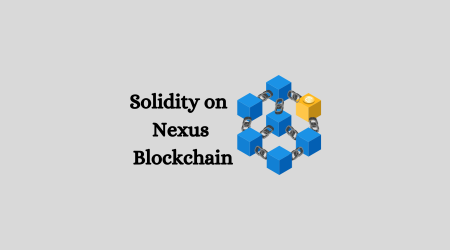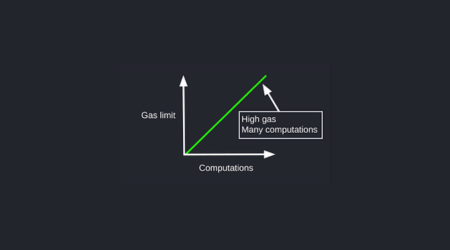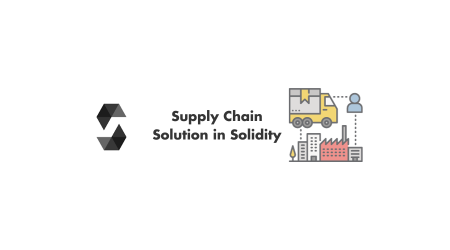Are you ready to dive into the world of Solidity programming on the Nexus Blockchain? Strap in, because this primer is your ticket to understanding the ins and outs of running Solidity on Nexus.
From setting up your development environment to writing and deploying smart contracts, we’ve got you covered. Get ready to interact with smart contracts using Web3.js and learn the best practices for Solidity development on Nexus.
Let’s embark on this technical journey together and unlock the potential of Nexus Blockchain.
1. Key Takeaways
- Solidity is the programming language used on the Nexus blockchain for writing smart contracts.
- Developers can create decentralized applications (dApps) on the Nexus blockchain using Solidity.
- The Nexus blockchain executes smart contracts that have their terms directly written into the code.
- Interacting with smart contracts on the Nexus blockchain is possible using web3.js and tools like Infura.
2. Basics of Solidity and Nexus Blockchain
Solidity is the programming language used on the Nexus blockchain. It is specifically designed for writing smart contracts, which are self-executing contracts with the terms of the agreement directly written into code.
Solidity’s integration with the Nexus blockchain allows developers to create decentralized applications (dApps) that can be executed on the Nexus network.
To begin working with Solidity and the Nexus blockchain, you need to set up the development environment, which involves installing the necessary tools and libraries.
3. Setting up the Development Environment
To successfully set up your development environment, you will need to have the required software and tools in place. This includes Solidity, the programming language for writing smart contracts, and Nexus Blockchain, the platform on which these contracts will be deployed.
Configuring your development environment involves ensuring that these software and tools are properly installed and configured to work together seamlessly. This will allow you to effectively develop and test your smart contracts.
I. Required Software and Tools
You’ll need a few software and tools to get started on running Solidity on the Nexus blockchain. Here are the essential tools and libraries you’ll need for smart contract deployment:
- Solidity Compiler: Use the Solidity compiler to compile your Solidity code into bytecode that can be executed on the Nexus blockchain.
- Nexus Wallet: You’ll need a Nexus wallet to store and manage your Nexus tokens and interact with the Nexus blockchain.
- Nexus API: The Nexus API provides a set of functions and methods that allow you to interact with the Nexus blockchain programmatically.
Once you have these tools and libraries set up, you can proceed to configuring the development environment for Solidity on the Nexus blockchain.
II. Configuring the Development Environment
Once the required software and tools are installed, configuring the development environment becomes the next step. To ensure a smooth and efficient workflow, it is important to follow environment configuration best practices.
These include:
– Setting up version control
– Organizing project directories
– Configuring code editors and debuggers
Additionally, familiarize yourself with troubleshooting common development environment issues such as compatibility problems, missing dependencies, and permission errors.
With the development environment properly configured, you can now move on to writing and compiling smart contracts.
4. Writing and Compiling Smart Contracts
In this discussion, you will explore the key points of Language and Syntax, Contract Deployment Process, and Debugging and Testing when it comes to writing and compiling smart contracts.
You will learn about the specific language and syntax used in smart contract development, including Solidity and the various keywords and constructs it offers.
Additionally, you will understand the process of deploying smart contracts onto the blockchain and the important considerations and steps involved.
I. Language and Syntax
To understand the language and syntax of running solidity on Nexus blockchain, you should familiarize yourself with the various keywords and structures used in the code. Here are three key aspects to consider:
- Understanding Solidity syntax: Solidity follows a similar syntax to JavaScript, making it easily readable and writable for developers.
- Solidity data types: Solidity supports various data types, including integers, booleans, strings, arrays, and more. Understanding how to use these data types correctly is crucial for writing efficient and secure smart contracts.
- Contract deployment process: Once you have written your smart contract, the next step is to deploy it onto the Nexus blockchain, making it accessible to users and other contracts.
Now, let’s delve into the contract deployment process.
II. Contract Deployment Process
Let’s now explore the process of deploying a contract onto the Nexus blockchain. The contract deployment process involves migrating your contract onto the Nexus blockchain, ensuring its secure execution and availability. To successfully deploy your contract, follow these steps:
| Step | Description |
|---|---|
| 1 | Write your contract code in Solidity. |
| 2 | Compile your contract code using the Solidity compiler. |
| 3 | Deploy your contract onto the Nexus blockchain using a deployment tool like Truffle or Remix. |
| 4 | Verify the contract deployment by checking the transaction receipt for the contract address. |
With your contract deployed, you can now move forward to the next section and learn about debugging and testing your code for optimal performance.
III. Debugging and Testing
Now that your contract is deployed, you can focus on debugging and testing it for optimal performance. To help you in this process, here are some key strategies and common errors to watch out for when debugging and testing Solidity contracts on the Nexus Blockchain:
- Common errors and how to fix them in Solidity debugging:
- Syntax errors: Check for missing semicolons, brackets, or incorrect variable types.
- Logic errors: Debug by using console logs or event emitters to track variables and identify problematic areas.
- Gas optimization: Review gas usage to identify and optimize costly operations.
- Strategies for efficient and effective Solidity testing on Nexus Blockchain:
- Unit testing: Write test cases for each function to ensure expected behavior.
- Integration testing: Test contracts together to verify interactions and dependencies.
- Testnet deployment: Deploy on a testnet environment to simulate real-world conditions.
5. Deploying Smart Contracts on the Nexus Blockchain
You can deploy smart contracts on the Nexus Blockchain using the Solidity programming language.
When deploying smart contracts, it’s crucial to pay attention to both smart contract security and gas optimization.
Smart contract security ensures that your contract is protected against vulnerabilities and attacks, while gas optimization helps to reduce the cost of executing your contract on the blockchain.
Once your smart contract is deployed, you can interact with it using web3.js, a JavaScript library that allows you to communicate with the blockchain.
6. Interacting With Smart Contracts Using Web3.Js
Interacting with smart contracts is made possible through the use of web3.js, a JavaScript library that allows for seamless communication with the blockchain.
With web3.js, you can interact with smart contracts on the Nexus blockchain by following these steps:
- Using Infura for remote smart contract interaction: Infura provides a simple and reliable way to connect to the Nexus blockchain remotely, allowing you to interact with smart contracts without running a local node.
- Handling events in smart contract interactions: web3.js provides methods to listen for events emitted by smart contracts, allowing you to capture and process relevant information.
- Managing transactions in smart contract interactions: web3.js enables you to send transactions to smart contracts, initiating state changes on the blockchain.
Now, let’s delve into best practices and tips for solidity development on the Nexus blockchain.
7. Best Practices and Tips for Solidity Development on Nexus Blockchain
When developing smart contracts on the Nexus blockchain, it’s important to follow best practices and incorporate helpful tips to ensure efficient and secure code.
Solidity, the programming language used for creating smart contracts on Nexus, has its own set of best practices. These include using the latest version of Solidity, avoiding unnecessary complexity, and properly documenting the code.
Additionally, it is crucial to thoroughly test the smart contracts before deploying them on the Nexus blockchain to ensure their reliability and functionality.




